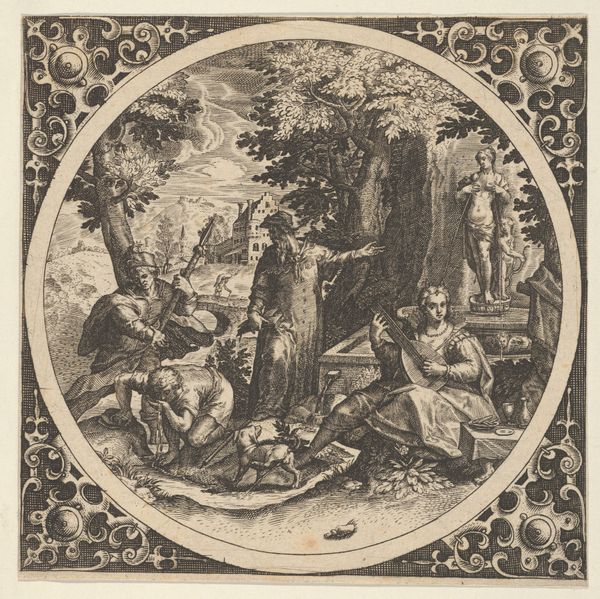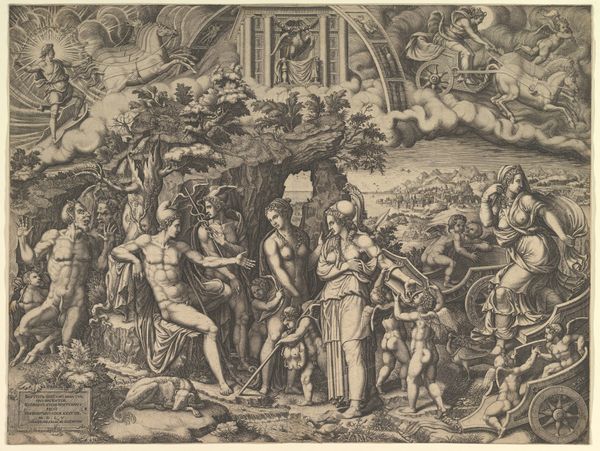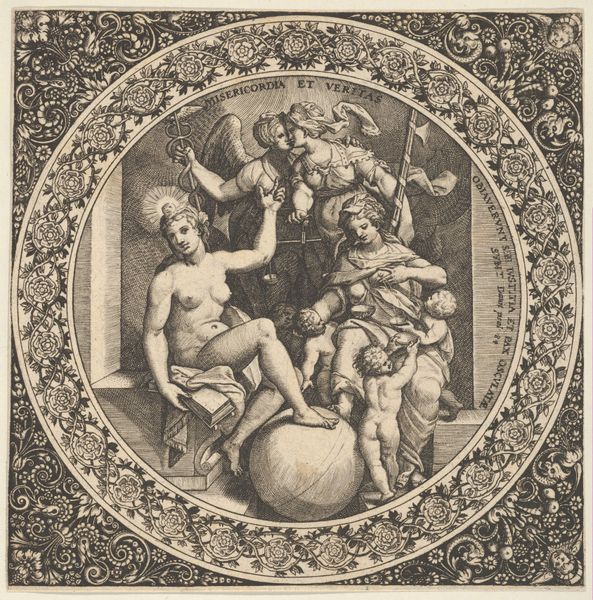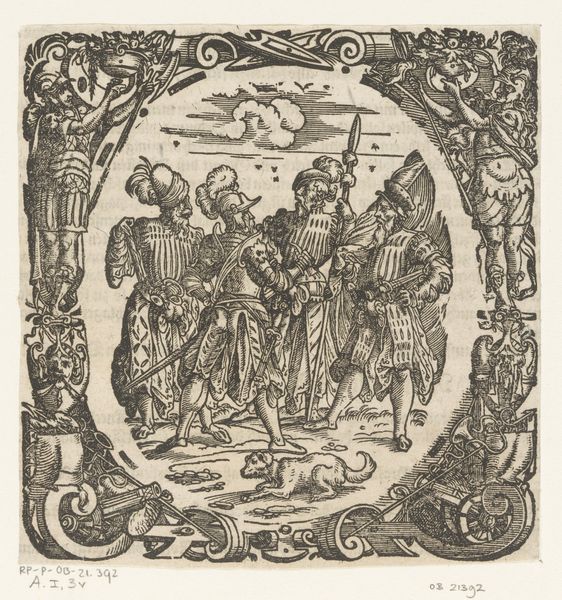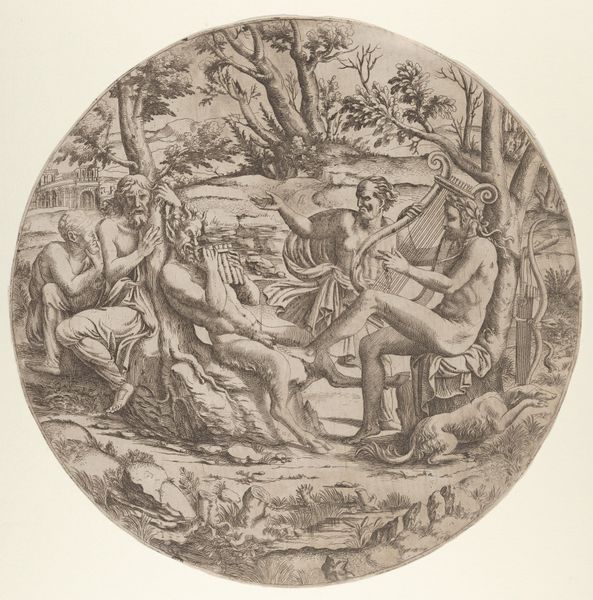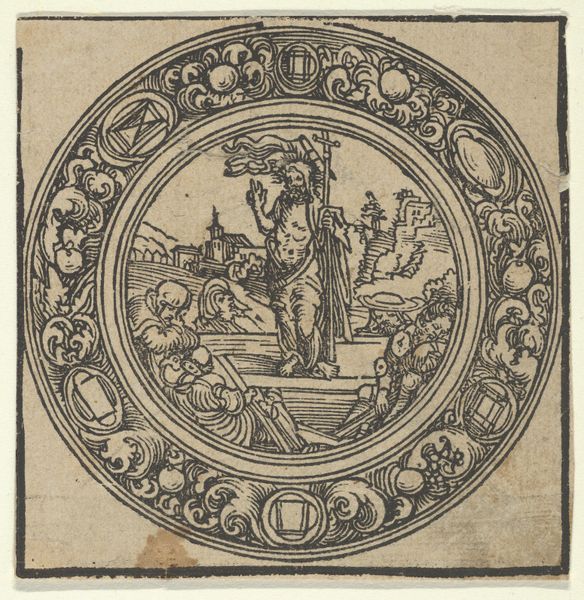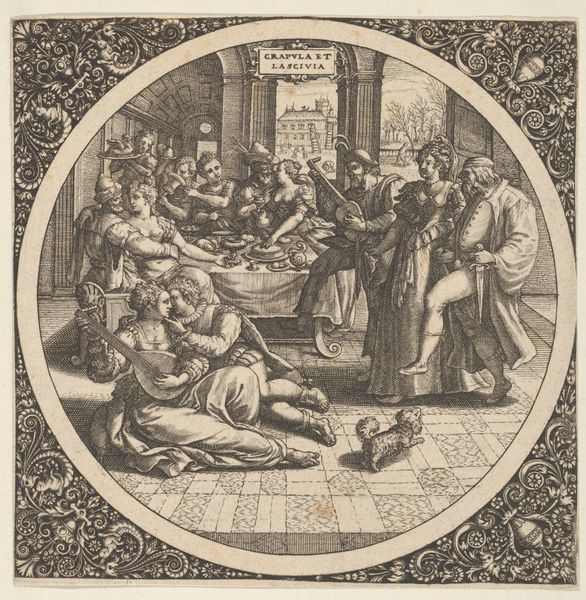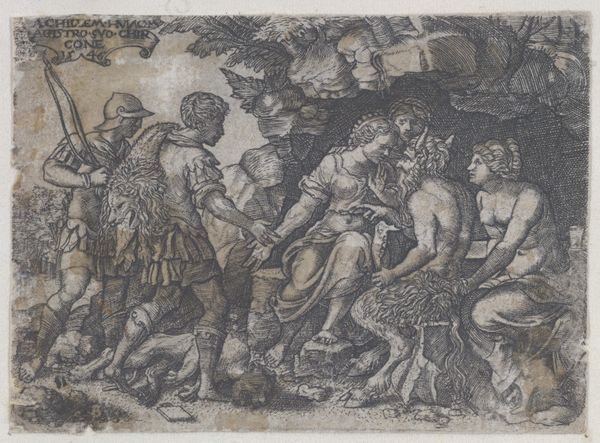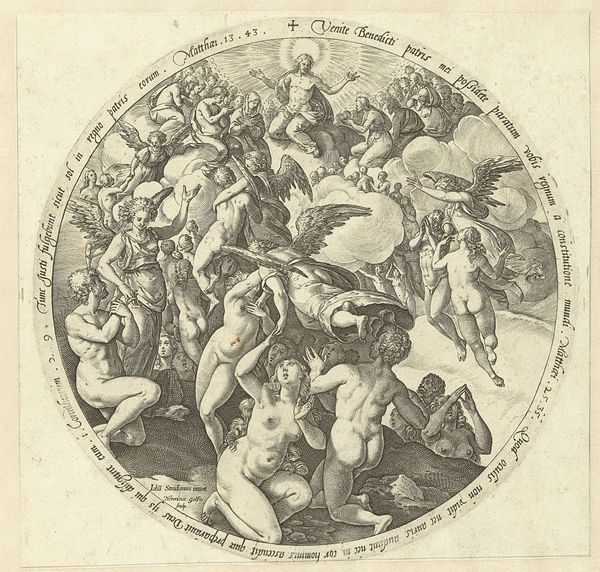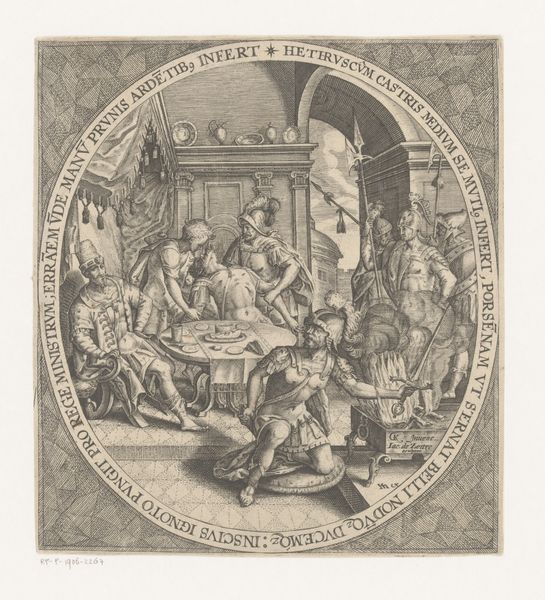
Scene with a Feast of Love in a Circle at Center 1580 - 1600
0:00
0:00
drawing, print, ink, engraving
#
drawing
#
allegory
#
pen drawing
# print
#
bird
#
mannerism
#
figuration
#
female-nude
#
ink
#
men
#
line
#
history-painting
#
nude
#
engraving
#
male-nude
Dimensions: Sheet: 5 7/16 × 5 9/16 in. (13.8 × 14.1 cm)
Copyright: Public Domain
Editor: So, this intricate engraving, "Scene with a Feast of Love in a Circle at Center" by Theodor de Bry, dates back to somewhere between 1580 and 1600. It’s this incredible scene filled with figures, and there’s definitely a festive mood with the feast and flowing robes, but there's something unsettling too. What's your read on this piece, especially given its historical context? Curator: The "unsettling" you perceive is a critical element, I think. De Bry, working within the Mannerist style, created this scene during a period of intense socio-political and religious upheaval. How might the context of the Protestant Reformation, the rise of capitalism, and increasing global exploration influence the way that symbols and iconography, like nude figures and banquets, are presented? Do you think this work reflects these tensions? Editor: Well, the extravagance feels like a pointed display, maybe critiquing excess or moral decay while other aspects may reveal historical gender expectations? Is it trying to highlight inequalities? Curator: Precisely. Images of classical and mythological scenes during this period were rarely just straightforward celebrations. Often they acted as allegories reflecting contemporary social and political conditions. We can read this as a moral commentary through a social lens, questioning established power structures and norms about virtue and corruption through classical figures, with their implications about status. How do you see this playing out here? Editor: I guess that context shifts the meaning quite a bit. What seemed like just a "feast of love" might be commentary on privilege and shifting power! It makes me want to pay closer attention to not just what’s depicted but also how it's meant to be seen by its intended audience. Curator: Exactly! Analyzing the art through the lens of historical power dynamics gives us a more critical reading. Hopefully now others who view it will do so through this light as well.
Comments
No comments
Be the first to comment and join the conversation on the ultimate creative platform.
